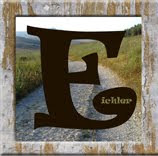In our Informational Society, we are presented with information 24 hours a day, 7 days a week. We have access to the information but do we use the information to increase our knowledge? Albert Einstein is quoted as saying "Information is not knowledge". This is a true statement of our current society. We listen to the news, we read articles online, our smart phones give us instant access to the world, yet the information we have is extremely shallow. Society has lost the art of delving deeper into a topic and discovering the truth. As a teacher, my goal has not been to impart information to passive students but to lead students to find the answers to their questions. Society must recapture the art of finding true knowledge, to look underneath, not believe it because someone said it, but to actively search and find the truth for themselves.
I am so excited. So excited, that I am carving out time to write a blog post; something I haven’t done in quite a while. I was texted a blog post: Cult of Pedagogy - 6 Ed Tech Tools to try in 2018 by the middle school principal. Let me just say, I haven’t been this excited about a new tech tool since I was introduced to Flipgrid. Are you curious yet about the tool? How about now? InsertLearning.com I am just going to call it a game changer for literacy! At least in my humble view. “How does it work”, I can hear you thinking. You can take any article from the internet, add questions (multiple choice and discussion), highlight important text, leave notes, and add YouTube videos and images. You can also record yourself reading. Then, you can assign the article through your Google Classroom. Not only is this an excellent resource for teachers to create documents for their students, this is an excellent way for students to read and process text. Students can re...

Comments
Post a Comment